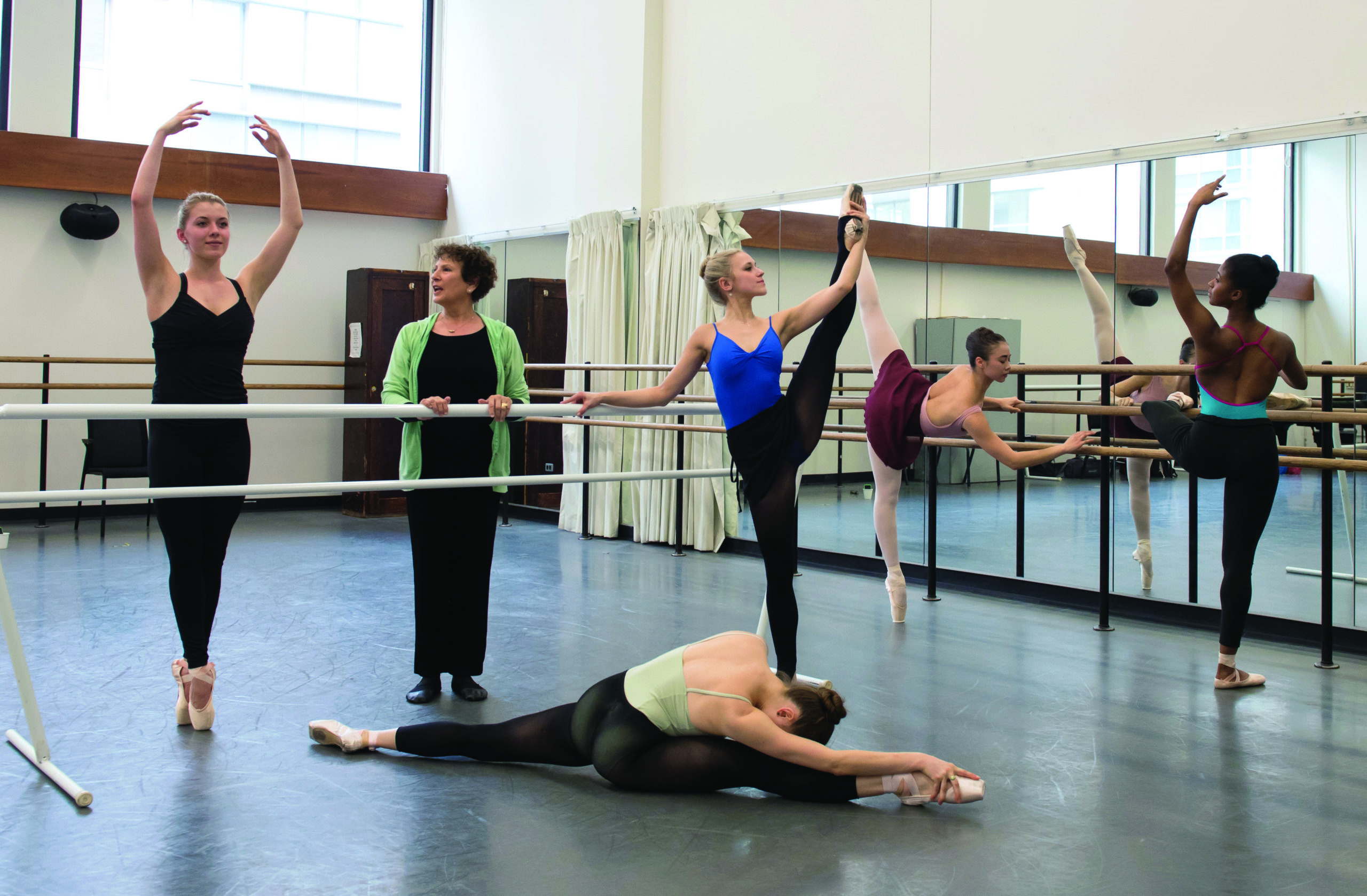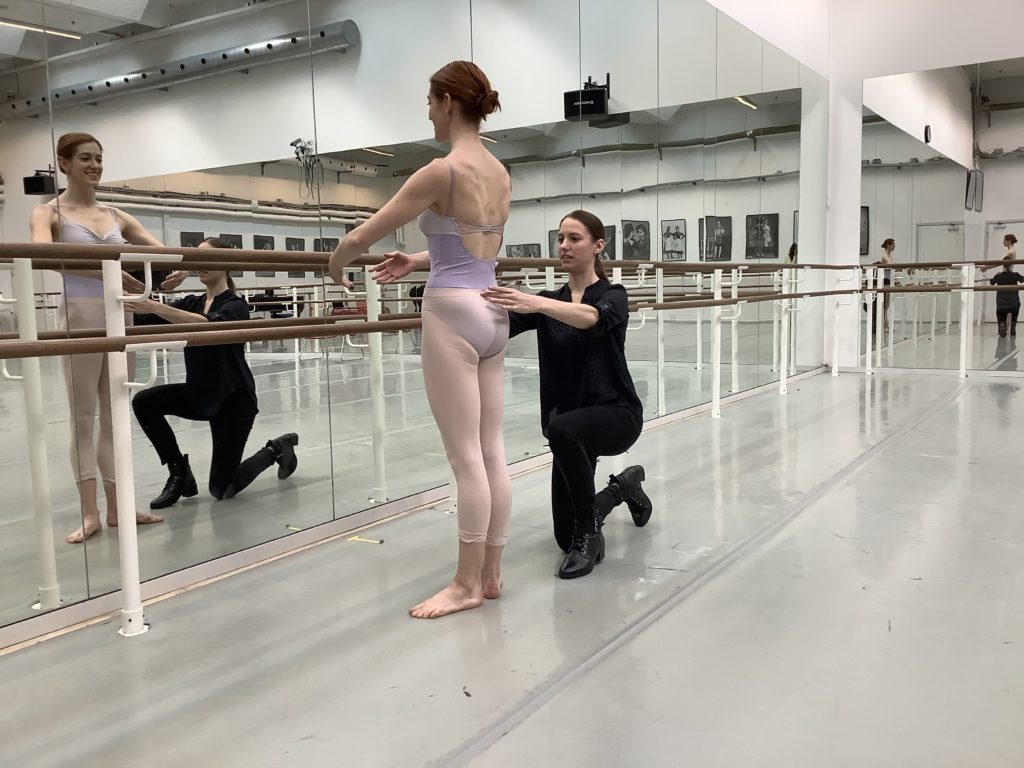
Kristen Kurie can still hear her ballet teacher’s voice in her head, doling out corrections. One she remembers clearly: “You look like crabs on the beach!,” referring to the dancers’ lack of fifth position in a petit allégro combination.
Kurie, a physical therapist at Westside Dance Physical Therapy and an occasional substitute ballet teacher, says that her clear memory of this correction and others speaks to just how influential dance teachers’ language in the classroom can be, especially for spongelike young students.
The power words have to impact students and their dancing can be a positive thing when those words are used carefully and intentionally. But too often we still hear language in the dance studio that is harmful—whether because it isn’t anatomically accurate, it contains implicit or explicit body-shaming, or it’s just plain mean.
Reflect on your use of corrections with this expert advice, and make your studio a safer, more learning-conducive environment for dancers.
The Damage Corrections Can Do
The tradition of carrying over knowledge and teaching concepts from one generation of dance teachers to the next can be a beautiful one. And yet, it can pose dangers to students when that knowledge has actually been debunked by more recent research, or when it hasn’t caught up to advances in dance science.
New York City–based ballet teacher Charla Genn says that even some of the most common corrections many of us heard growing up and that can still be heard in many studios—like “pull the shoulders down,” which leads to misplacement of the scapulae, or “flatten the back”—are actually deeply flawed and can lead to students working in incorrect alignment, thus setting them up for injury.
Dance studio culture has changed over time too, and it’s now clear that what was once thought of as language that produced “tough” dancers can actually hamper students’ learning, not to mention hurt them and their love for dance. Kurie still remembers how in studios where she felt scared, “I was never on my leg. I was always gripping my thighs. I always felt defensive,” she says. “I’ve always opened up more in a place where I felt safe.”
“The science backs this up,” says Dr. Paula Thomson, a clinical psychologist and a professor in the department of kinesiology at California State University, Northridge. “When dancers are afraid or ashamed, they dissociate,” she says. “They’ll go to a place where they miss the correction or they miss the sequence. Then they feel worse and dissociate more. It becomes that descending slope—you can see the blank stare, like they can’t process any more. And many will quit.”
According to Thomson, even seemingly playful corrections said in jest—like “hamburger hands,” or “floppy fish feet”—can be harmful. Any comparison that has “a component of disgust,” she says, will read to students’ brains as if they themselves are disgusting. “We internalize that language, and our brains won’t hear the joke.”

How to Give More Thoughtful Corrections
Educate yourself about anatomy. Learning about basic functional anatomy is the most important thing dance teachers can do to begin giving safer, more effective corrections, says Genn. Thomson recommends the book Dance Anatomy by Jacqui Greene Haas to start. Having this knowledge is more important than ever, says Thomson, as dancers are coming to the studio better educated about anatomy themselves, so teachers who are misinformed will lose credibility with them.
Lead with curiosity. Try getting students involved in exploring their own bodies instead of just giving them directives, suggests Thomson, looking at issues as opportunities to problem-solve together. “Get them curious—it keeps their mind and their creative sensibility part of the class,” she says. “I’m really big on investigation, on saying to every dancer: ‘You have your own body. It’s got its unique things. We’re all asymmetrical, so let’s figure this out.’”
Work from the inside out. Kurie says she often sees teachers correcting from the bottom of the kinetic chain to the top, or from the outside of the body in. (For example, cueing to “turn out your feet” instead of looking at the hips, or correcting the placement of the arms without addressing where the shoulders are sitting.) This amounts to fixing the symptom but not the cause, she says, and can lead to dancers continuing to work in improper alignment. Instead, “set up the spine, set up the bigger joints, and the limbs will flow out from here—you’ll get a much better position with less effort.”
Don’t pretend to know what you don’t. “If you want to make a correction but don’t know how to get them there, don’t pull something out of thin air just to say something,” says Kurie. “I think a lot of times teachers feel like they have to talk throughout the whole class, and if they aren’t giving corrections every second, they’re not doing their job. I think it’s more effective if you grow with your students, so maybe you hold back and do a little research.”
Learn from your students. “I’m always rethinking my corrections,” says Genn. “I try not to get stuck. I am always learning from my students because if they know something, I want to know it too.” Notice how students respond to your corrections, physically and verbally. Students’ long-term progress may also clue you in on what you need to work on expressing more effectively: Kurie suggests asking yourself: “‘Do I have a class that’s just not getting something? Do I see students year after year not getting it? Is there a better way that I could cue them?’ It all starts with doing that little bit of honest self-reflection.”





